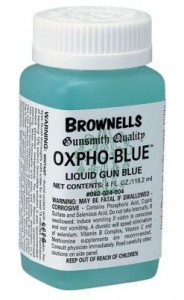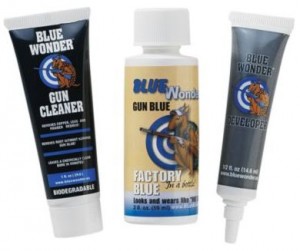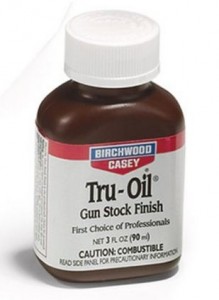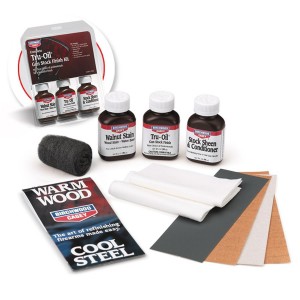Your gun’s finish has two main purposes: protect the gun and look nice.
Today’s guns may be manufactured of different materials than vintage guns, many of which are weather resistant and designed to camouflage the appearance for hunting. There are even paints and wraps that let you change the appearance from a conventional look to camo for older guns you may already own.
If your gun has a worn or damaged finish it is important to correct the issue. It has been said that guns have only two enemies “Rust and Politicians” which seems truer these days than ever.
If you like your firearm to retain the worn/used look from countless hunts or time in a holster then you need to keep it lightly oiled to prevent corrosion. Collectors often frown upon refinishing because they believe the guns value will be diminished in the process. In my opinion that is only true if you plan to sell it to someone else. If your gun is a working gun for carry or for taking to the range and you plan to keep it then you need to address the worn finish.
I have two products (Oxpho-Blue and Blue Wonder) that I regularly use to repair “blued” steel parts on guns. While not as good for corrosion protection as the original “Hot Bluing” from the factory, it does provide a cosmetic repair and when with oil can prevent rusting of scratches or worn areas.
These products can be applied multiple times to achieve the level of color desired, but are best for small areas and repairs as it may be difficult to achieve an even finish over large areas.
Most of the gunstock refinishing I have done has been to repair previously botched refinish jobs. I have gotten some real bargains on firearms where people have just brushed on varnish or polyurethane over the old finish. This often leaves them frustrated with an ugly gunstock full of drips, cratering and rippling.
When it comes to wood gunstocks the preparation is as important as the finish itself and involves stripping, sanding, and patience. Remove the wood from the gun to prevent damage to adjoining parts. I often leave small dents and imperfections in the finish as part of the character of the gun. Just as wrinkles on a face can impart wisdom and experience (or maybe just too much sun).
If desired, dents can often be raised by placing a damp cloth over the dent and steaming it up with an iron. Be careful when sanding, if you remove too much material the stock may not fit properly and line up with mating parts upon reassembly.
My favorite product for wood Gun Stocks is Birchwood Casey Tru-Oil.
This product takes multiple applications to achieve the desired results. As few as three coats of Tru-Oil will provide a durable finish with a level of visible grain pattern, or you can wet sand in between several coats and achieve a high gloss smooth finish. If you desire a matte finish the sheen can be knocked off with very fine steel wool and wax.
It is a good idea to hone your skills on a lesser value gun; your first project shouldn’t be Great Grandpa’s priceless heirloom. I find it very satisfying to take an old dog of a gun and turn it back into a thing of beauty, it can help stretch your gun buying budget and expand your enjoyment of the hobby.




